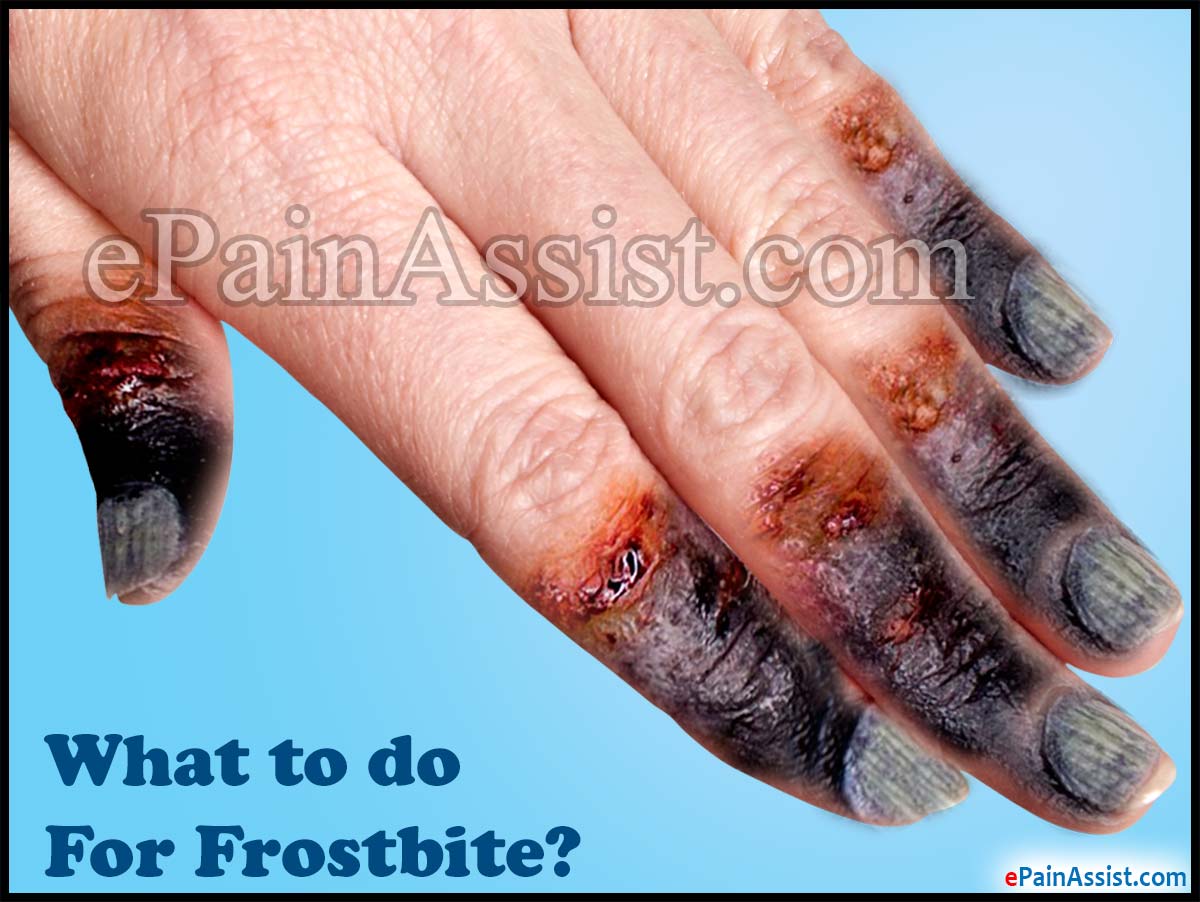Frostbite is a condition affecting the skin, particularly during extreme winters and cold environment. During extreme cold temperatures, the skin of the fingers, hands, feet, toes, nose and ears which remain exposed to cold air, are at a risk of damage from extreme cold. If proper care is not taken to keep them covered, frostbite can result, causing the skin in these areas to freeze.
What is Frostbite?
Frostbite causes damage to the skin and results in frozen body tissue. Frostbite can occur by exposure to freezing cold winds just for a few minutes. The degree of damage and severity of frostbite depends on the exposure to cold and the extent of damage caused to the skin.
When the exposed parts like tip of nose, mouth, fingers and toes feel the cold air during extremely cold winters, the skin on these areas often turns sore and red. This is called frostnip and is usually a warning sign of a forthcoming frostbite, if appropriate care is not taken. Initially, frostbite affects only the superficial layers of the skin and if cold exposure continues, it can result in damage to the deeper layers of skin too.

What Happens When You Get Frostbite or What are the Signs and Symptoms of Frostbite?
Frostbite affects upper layers of the skin but may go into the deeper tissues if the cold exposure is for long. Initially, the skin on the exposed surfaces may turn pale and yellowish, which may cause itching, burning and different feeling on the skin. The skin areas may begin to feel numb and reduce the sensation of that part.
Further, the skin starts becoming hard and appears glossy. Blisters may form, with peeling off of the skin or may get filled with fluid or blood. If it progresses, the area may become cold and hard, turns bluish black and may not have sensation.
Causes of Frostbite
Frostbite is a result of freezing of skin and underneath tissues, which mainly occurs due to exposure to extreme cold weather. Sometimes, direct contact with freezing items like ice, frozen objects like metals or liquids can cause frostbite too.
Certain conditions can increase the risk of frostbite, which include:
- Being outdoors during extreme cold weather, especially when the temperatures have dropped down to freezing points or during very cold winds. Becoming wet due to snow or being in wet clothing can increase chances of frostbite.
- Staying unprotected without proper winter wear during extreme cold weather. If the clothing and winter wear do not offer appropriate protection or if parts of body are left uncovered, the skin can suffer from frostbite.
- Kids may get easily affected as their skin is tender and can lose heat more quickly thus increasing chances of damage from extreme cold and frostbite. Those going for morning walks, jogging and hikers during cold weathers, are at increased risk of frostbite, so proper sport gear and winter wear is a must.
- Exposure or direct contact to icy cold water, frozen metals or extremely cold packs can be dangerous and cause frostbite. Swimmers and those involved in ice, water or adventure sports need to be extra careful during winters.
What to do for Frostbite or What is the Treatment for Frostbite?
Managing frostbite essentially involves coming indoors immediately and keeping the body parts covered. Avoid walking if there is frostbite on feet. Any wet or cold clothing should be removed and warm clothes with winter wear should be worn, while covering all the exposed and affected parts.
Use warm water to heat the cold body parts by gently immersing, making sure that the water is not hot and does not cause any burns. It is better to avoid direct heating with heat pads or radiators on the affected skin, as the numb skin usually loses sensation and it can cause damage to the skin. Avoid rubbing over the affected skin, if blisters are formed. Apply loose bandage over the skin or place balls of cotton to keep fingers separate.
It is important to seek medical attention in case sensation of skin or normal skin color does not reappear after immersing the parts in warm water or in case blister formation occurs. Pain medication may help to relieve the pain and discomfort. Medicines to prevent infection to the affected skin may be given. For more complicated wounds due to frostbite, removal of dead tissue, surgical repair or wound management to promote healing may be considered.
What Can You do to Prevent Frostbite?
Prevention from exposure to extreme cold winds or icy cold weather is important. Wearing appropriate winter gear, covering and protecting exposed body parts can help prevent frostbite. Wear jackets, scarfs, headbands, which covers ears and socks, mittens that protect hands, fingers, feet and toes.
Travelling during cold weather should be planned ahead of time and extra warm clothing, food and emergency medicines should be carried along with. It is important to know the early signs of frostbite to protect skin from further damage.
Limiting exposure during extreme cold weather and keeping internal warmth is equally essential. Eating a balanced meal, healthy warm beverages and staying hydrated is important. Regular exercise during winter and at other times can help to keep the body active with improved circulation, which can help to reduce chances of frostbite.
